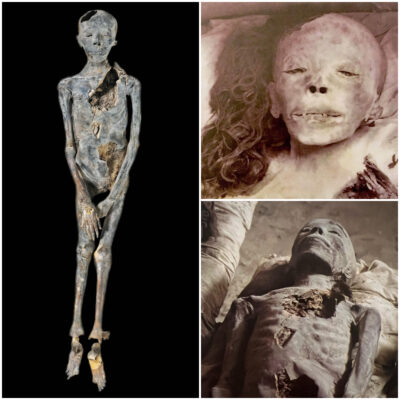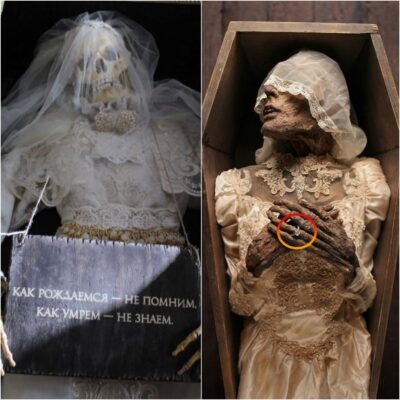Ahram Online reports that more than 40 mummies of men, women and children were unearthed at Tuna El-Gebel necropolis in Minya, Egypt.
According to Minister of Antiquities Khaled El-Enany, the human remains found in the Ptolemaic rock-cut burial chambers are thought to have belonged to an upper-middle-class family.
Ptolemaic burial chambers found at Tuna El-Gebel in Minya, Egypt.Image credit: Ancient Egyptian Antiquities Department/via Ahram Online
El-Enany said that the mummies are in a good conservation condition and some are wrapped in linen, or decorated with Demotic handwriting.

Some of them still have fragments of colored cartonnage covers near their feet.
Some of the mummies were placed in stone or wooden sarcophagi, while some were laid on the floors or in niches in the walls of the tombs, explained Mostafa Waziri, secretary-general of the Supreme Council of Antiquities, who added that the methods used in burying the mummies inside the maze of tombs varies in style.
Pieces of papyri and texts written on fragments of pottery suggest the burials date to the Ptolemaic, early Roman, and Byzantine periods.
Ostraca and fragments of papyri were also found in the tomb, he said, which helped reveal that it could date to the Ptolemaic, early Roman and Byzantine periods.

Ptolemaic burial chambers found at Tuna El-Gebel in Minya, Egypt. Image credit: Ancient Egyptian Antiquities Department/via Ahram Online
The excavations began in February 2018, when it discovered a tomb engraved in rock composed of a corridor leading to sloping stairs that opened to a rectangular chamber with a number of burials.
Additionally, another chamber was also found at the western side filled with mummies and large stone sarcophagi. At the northern side there is a third chamber with a collection of stone sarcophagi inside niches.

This is the typical burial style used in Tuna El- Gebel, which once was the necropolis of Egypt’s 15th nome during the late New Kingdom and the beginning of the New Intermediate Period.
The archaeological site at Tuna El-Gebel, contain several tombs. Among them, there is the tomb of Petosiris (also known as Ankhefenkhons), who was the high priest of Thoth at Hermopolis; the Isadora tomb, which contains the remains of a rich woman who lived in the 2nd century CE; a sacred animal ceremony, a Roman cemetery and two frontier reliefs of king Akhenaten.

The Ptolemaic Kingdom was a Hellenistic kingdom based in ancient Egypt. It was ruled by the Ptolemaic dynasty, which started with Ptolemy I Soter’s accession after the death of Alexander the Great in 323 BC

It was founded in 305 BC by Ptolemy I Soter, a diadochus originally from Macedon in northern Greece who declared himself pharaoh of Egypt and created a powerful Macedonian Greek dynasty that ruled an area stretching from southern Syria to Cyrene and south to Nubia.
The era of Ptolemaic reign in Egypt is one of the best-documented time periods of the Hellenistic period; a wealth of papyri written in Koine Greek and Egyptian have been discovered in Egypt.











